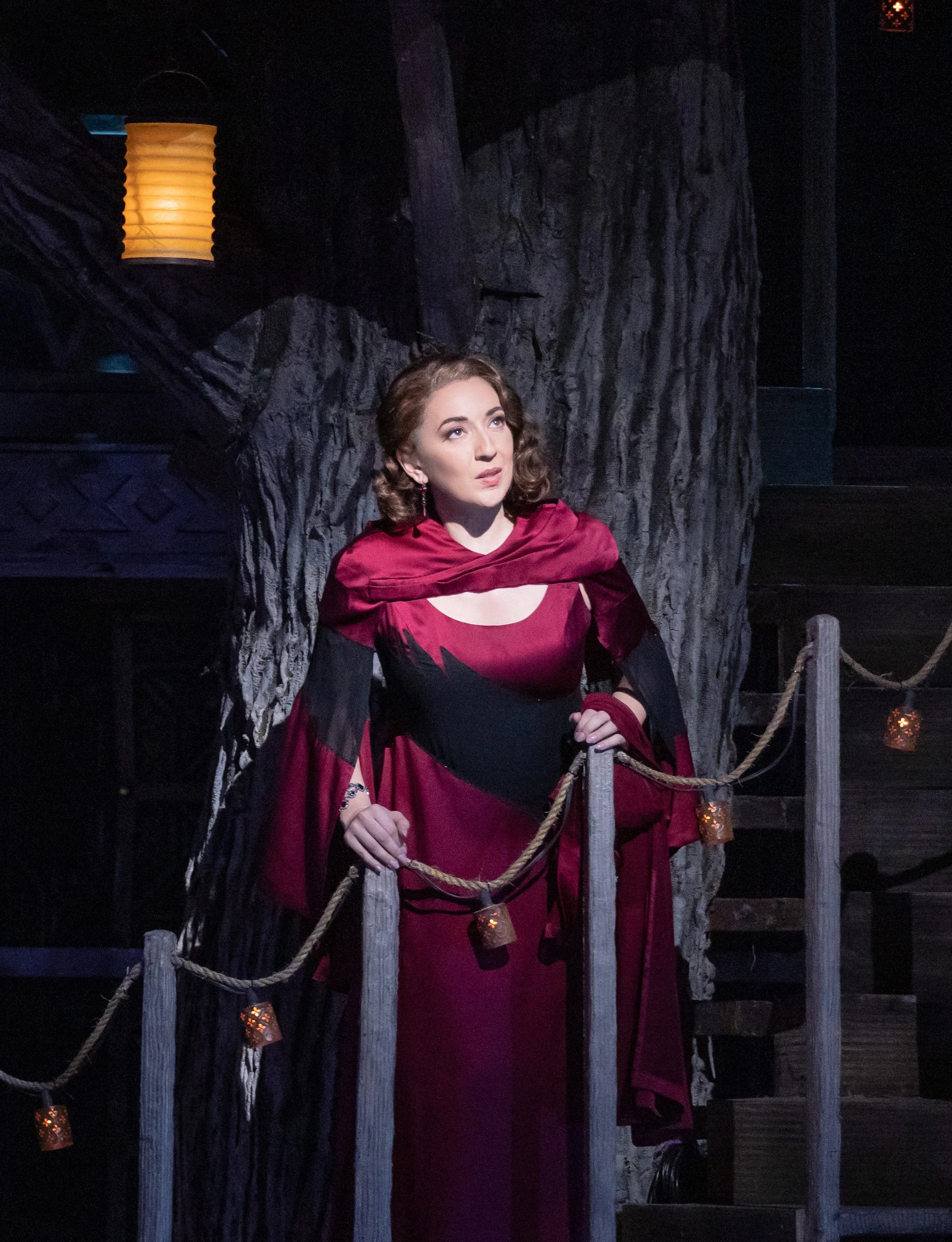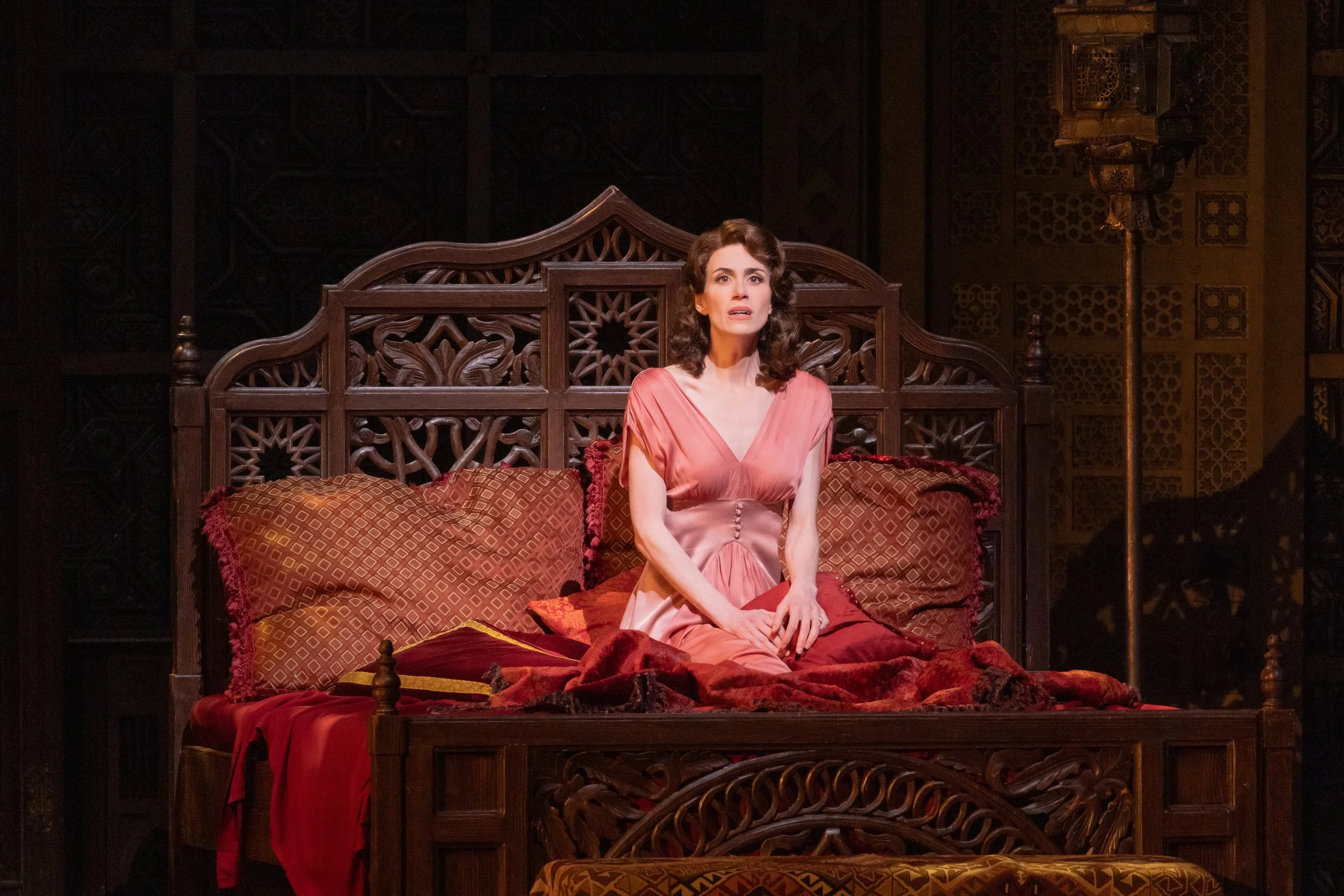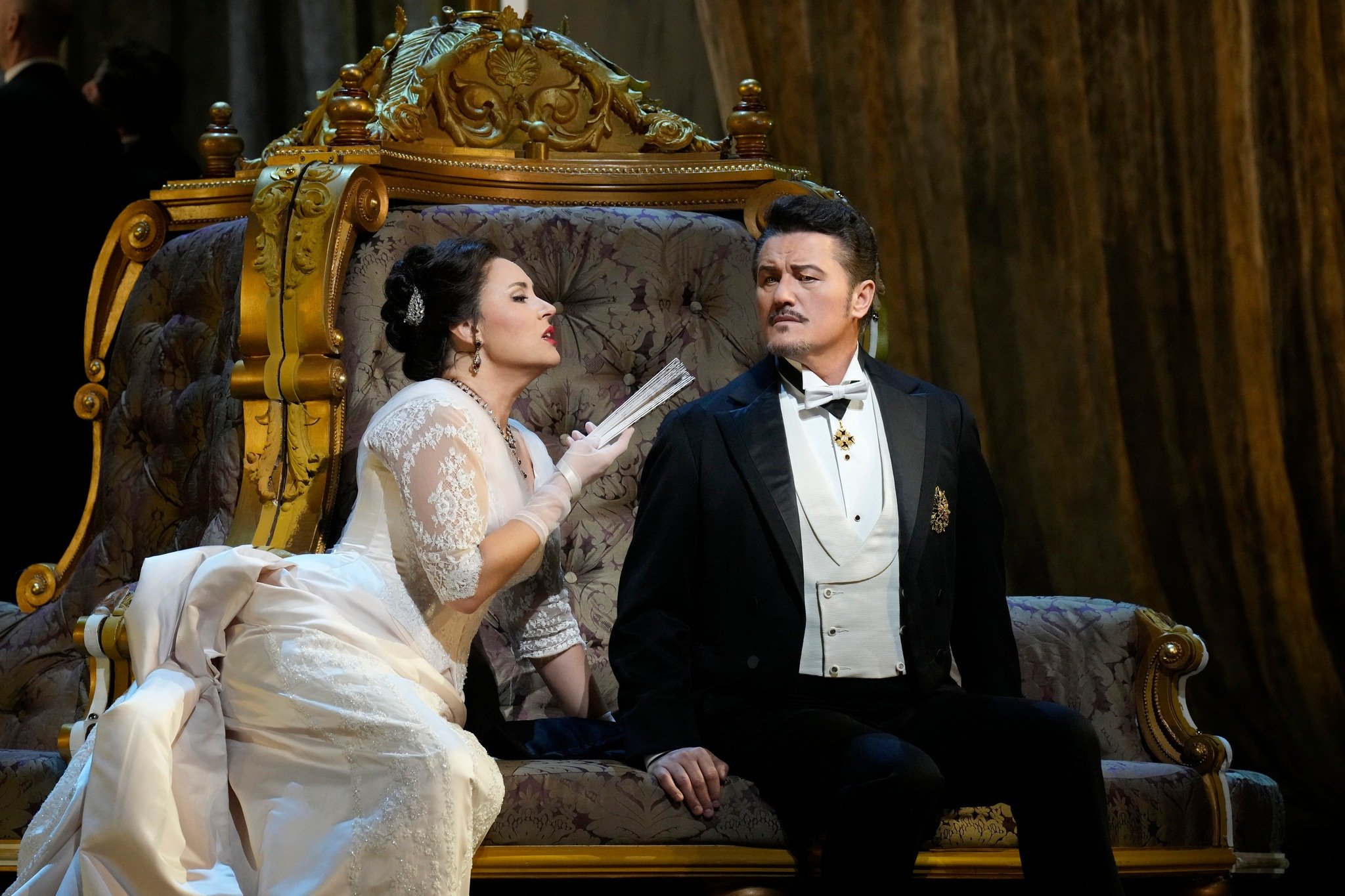Met Opera 2024-25 Review: Le Nozze di Figaro
From left: Rosa Feola, Adam Plachetka, and Jacquelyn Stucker in Le Nozze di Figaro (Evan Zimmerman/Met Opera)
I’m terrified of the question “What’s your favorite opera?” I have about seven, but when pressed to choose one, Le Nozze di Figaro often lands on top. Mozart’s first collaboration with dashing libertine Lorenzo Da Ponte is an exquisite confection in every respect, and the Met’s delicious revival this season didn’t skimp on the frosting. Cast A, with Federica Lombardi and Olga Kulchynska, was the one that got the HD broadcast in cinemas, but I was more than happy to see the second, starring Rosa Feola and Emily D’Angelo.
Rosa Feola in Le Nozze di Figaro (Evan Zimmerman/Met Opera)
Figaro’s name may be in the title, but make no mistake, Nozze is Susanna’s show. The plucky maid is the one pulling the strings, deep in cahoots with the Countess, and pulling the wool over everyone’s eyes. The only time she isn’t one step ahead of the men is when she, disguised as the Countess, doesn’t realize that Figaro is only wooing her because he’s recognized her, not because he’s a fledgling adulterer. Rosa Feola vibrantly brought to life all of Susanna’s spunk, wit, and fun, always enlivening the scene despite being onstage for nearly the whole three and a half hours. It doesn’t hurt that she possesses one of the most purely lovely voices of our age, like a bird with opalescent feathers. The highlight of Act 4 of Nozze should always be Susanna’s aria “Deh, vieni, non tardar,” and I closed my eyes to better savor the music. It was unfairly ravishing.
Jacquelyn Stucker in Le Nozze di Figaro (Evan Zimmerman/Met Opera)
Susanna reminds us of the Countess Almaviva in her youth, then called Rosina and every bit as clever and lively as her future maid (see Rossini’s prequel Il Barbiere di Siviglia). Now, the Countess is more reserved and sorrowful, weighed down by her husband’s inveterate infidelity and cruelty. Jacquelyn Stucker, making her Met debut, had impeccably regal and proud carriage to match her graceful sound.
I've been a colossal fan of Canadian mezzo-soprano Emily D’Angelo ever since I saw her as Annio in La Clemenza di Tito in 2019, so her presence as Cherubino was probably the biggest (but far from the only) reason I wanted to see this cast. She didn’t disappoint, her voice as rich as a master chef's chocolate mousse and supple as ever. The “woman playing a man disguised as a woman” shtick was hilarious, and her awkward gait in high heels was one of the night’s comedic highlights. Her height certainly helps her in pants roles — during the scene when Cherubino, dressed up as a girl, joins other village girls to present flowers to the Countess, Emily very conspicuously stood above everyone else. After she opened this Met season with the lead role in Jeanine Tesori’s Grounded, it’s fair to say that she’s finally getting some of the recognition she deserves.
From left: Adam Plachetka, Emily D’Angelo, and Luca Pisaroni in Le Nozze di Figaro (Evan Zimmerman/Met Opera)
The superb Adam Plachetka had a full-bodied sound and formidable presence as Count Almaviva, blustering and roaring his way through the women’s traps until he finally swallowed his own medicine. His simple “Contessa, perdono” was so luscious that it’s no wonder the Countess forgave him. Luca Pisaroni was a darkly suave and elegant Figaro, even if some of his high notes were a trifle underpowered. When I first saw Nozze in 2018, Pisaroni was the Count and Plachetka was Figaro, and during this run I sometimes found myself confusing one for the other. Why is Figaro dancing happily with Marcellina in Act 2? Is he trying to appease her? Oh, right, Adam’s playing the Count tonight.
Maurizio Muraro and Elizabeth Bishop have performed Bartolo and Marcellina scores of times, and it’s easy to see why: besides being in fine vocal form, they both have pitch-perfect comic timing and expert understanding of their characters. The real-life mensch Aaron Blake was delightfully slimy as Don Basilio and Jazmine Saunders made a wonderful Met debut as Barbarina. Maestra Joana Mallwitz, the chief conductor of the great Konzerthausorchester Berlin, is, like Stucker, a newcomer to the Met. Under her baton, the Met Orchestra sounded fresh and energetic, and the Met Opera Chorus vividly shone.
After Nozze, Mozart and Da Ponte wrote Don Giovanni and Così fan tutte together. However, in my opinion, they never managed to equal Nozze, a preference sustained by this sparkling Met cast. Le Mariage de Figaro is actually only the subtitle of the original Beaumarchais play; the main title is La Folle Journée, or The Crazy Day. This run of Nozze flew by much too fast, and I hope we don’t have to wait more than two seasons to experience another crazy day in the tempestuous Almaviva household.







